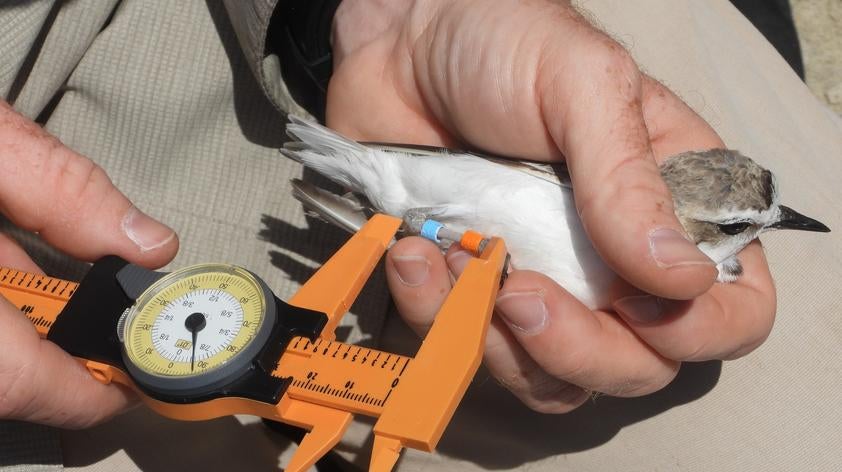
Picking up the pieces: A clue-based science
San Diego County provides critical nesting habitat for two species of small beach-nesting birds: the endangered California Least Tern and the threatened Western Snowy Plover. During the summer, these animals will create circular depressions in the sand, called scrapes, abutting the oceanfront, and lay their clutch in them. The parent birds will tend to those nests for nearly a month. During that time, they’ll incubate, protect the nest from predators, and forage close by until their eggs hatch.
However, it’s a tough world out there for these tiny animals. Sometimes, their eggs don’t produce chicks that will fledge. Some of those eggs never even hatch. There are many potential reasons for this: rising tides and flooding, predation, and abandonment by parents are a few of those reasons. It’s a bittersweet feeling here at the San Diego Zoo Institute for Conservation Research, because we’d much rather watch nests succeed, although we can still be hopeful at the prospect of learning from what’s left behind.
Ever since we have been monitoring the birds, we’ve been collecting hundreds of field samples, such as those non-viable eggs and other remains from all over Southern California, and have begun to analyze them using many different methods.
Examples of the data collected include analyzing the size of the tern and plover eggs and thickness of eggshells. Over time, we hope that these measurements provide an index between egg health (which depends in part on the quality of their diet) and the resources that are actually available during a given breeding season. These would complement the monitoring work we do every day: for example, necropsies by pathologists at San Diego Zoo Global have revealed that many of the dead least tern chicks we’ve recently found have starved to death, indicating that chick mortality is probably the result of poor foraging conditions out at sea, at least in part.
If a lack of food availability causes poor body condition in chicks, how would it affect their parents? If we have an index from opportunistically salvaged samples, this could be one way to provide clues without having to trap live birds and cause disturbance.
Some failed eggs are sent to a toxicology lab also in order to monitor trends in biochemistry, especially in DDT, mercury, and some trace elements. In the future we hope to explore tern and plover DNA, which would help us understand the genetic diversity of birds that frequent our shoreline. We’re currently working with nearly two decades’ worth of samples from all over the region, and that number grows every year.
Of course, this aspect of our research doesn’t come without challenges: it’s based almost completely on opportunity, and because of individual variation, being able to make inferences about whole populations will require many years’ worth of data— the differences which are usually very slight, but may be important. Of course, the results have huge discovery potential, especially considering they’re derived from otherwise forgotten remains.
Effective conservation begins with understanding current trends and applying that knowledge to strategy. But that takes time. Our end goal for these analyses is to take our monitoring program to the next level by following seasonal changes at a micro-scale, and using those data to detect important trends, and make better-informed conservation planning and management decisions heading into the future.
Josh De Guzman is a Research Assistant with the SDZG Terns and Plovers team, working at Marine Corps Base Camp Pendleton, and at the Institute for Conservation Research.













